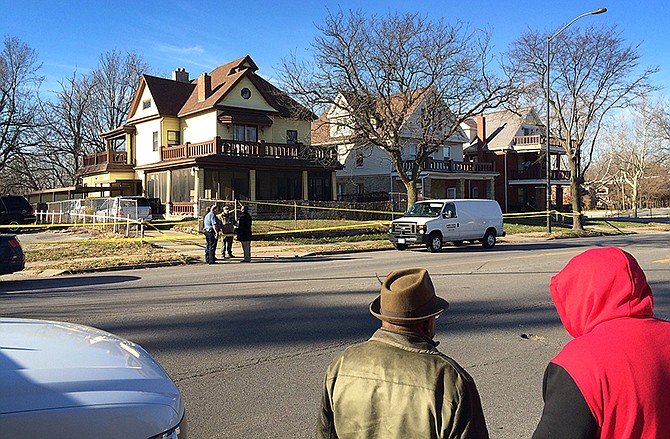KANSAS CITY, Mo. (AP) - When homicides in Kansas City, Missouri, dropped in 2014 to their lowest point in 42 years, leaders of the city's anti-violent crime initiative cautioned it was too soon to declare the local homicide problem under control.
Their prudence was validated in 2015, when the homicide count reached 109, returning to its 10-year average. And so far in 2016, the city has 11 homicides, which is more than it had at this point in previous years.
Leaders of the fledgling Kansas City No Violence Alliance say the higher homicide numbers are troubling but not a signal that the focused deterrence approach to fighting crime introduced four years ago is failing.
"Even though the homicide rate is higher, this remains true: A small percentage of the criminal population is doing violent crime," Jackson County Prosecutor Jean Peters Baker said. "If we can more accurately identify who those people are and use all the tools that we have available to address them, this will work. The homicide rate will go down."
Many of the underlying issues - poverty and the lack of education and jobs - blamed for the city's high homicide count haven't gone away, said Pat Clarke, an outreach liaison for the Kansas City Police Department.
"It's hard to try to do something different when the streets are still calling you," said Clarke, who believes his own experiences selling drugs and committing other crimes as a young man give him credibility with those the anti-violent crime initiative is trying to reach. ""Baby still needs diapers. I didn't go no farther than sixth grade. This is all I know how to do.' There's a whole lot of things a guy could say."
Baker's office, local law enforcement agencies, federal prosecutors, the University of Missouri-Kansas City and assorted social service agencies collaborate on KC NoVA, created in 2012 to address a local homicide rate that routinely puts Kansas City on lists of the nation's most-dangerous cities.
The effort uses "focused deterrence" to convince criminals to change their ways or face severe consequences. It's an approach in which all members of a criminal network are identified and sought out by police, who want them to know their actions can have unintended consequences for others in their circles. Those who want to pull away from criminal affiliations are offered social services to help them do so.
KC NoVA is modeled after Boston's Ceasefire program, which was credited in the mid-1990s with sharply reducing youth homicides and gun-related crime in that city.
In 2014, KC NoVA's second year, the city's 81 homicides were the fewest since 77 people were slain in 1972 and far lower than the 10-year average of nearly 109.
Rather than declare victory, then-NoVA commander Joe McHale attributed 2014's tally to "the perfect wave of a lot of things coming together" and said it would take more than one year to achieve success.
Though the homicide count went back up in 2015, Clarke said it shouldn't overshadow the positive changes NoVA has made in the lives of many participants.
Some men targeted by the program have become better fathers and started being more productive, he said. But a few others have been killed, and there are some who will never change their criminal ways, he said.
"I'd say a lot of them, they learned a lesson," Clarke said. "Some it just didn't matter."
Andrew Fox, an assistant criminal justice professor at UMKC who is working with NoVA, said the focused deterrence approach was effective for the first nine months of 2014 before the city's homicide count started ticking upward.
He shrugged off the notion that the rise in local violence that began in late 2014 and continued through 2015 was connected to the unrest in cities across the U.S. after Michael Brown, a black, unarmed 18-year-old, was fatally shot by a white police officer in August 2014 in the St. Louis suburb of Ferguson.
"I think that's a theory people are trying to hash out," Fox said. "The fact is that in the Midwest in 2015 there was a lot more violence in places like Milwaukee, Chicago, St. Louis, us. All saw increases that we don't fully understand."

